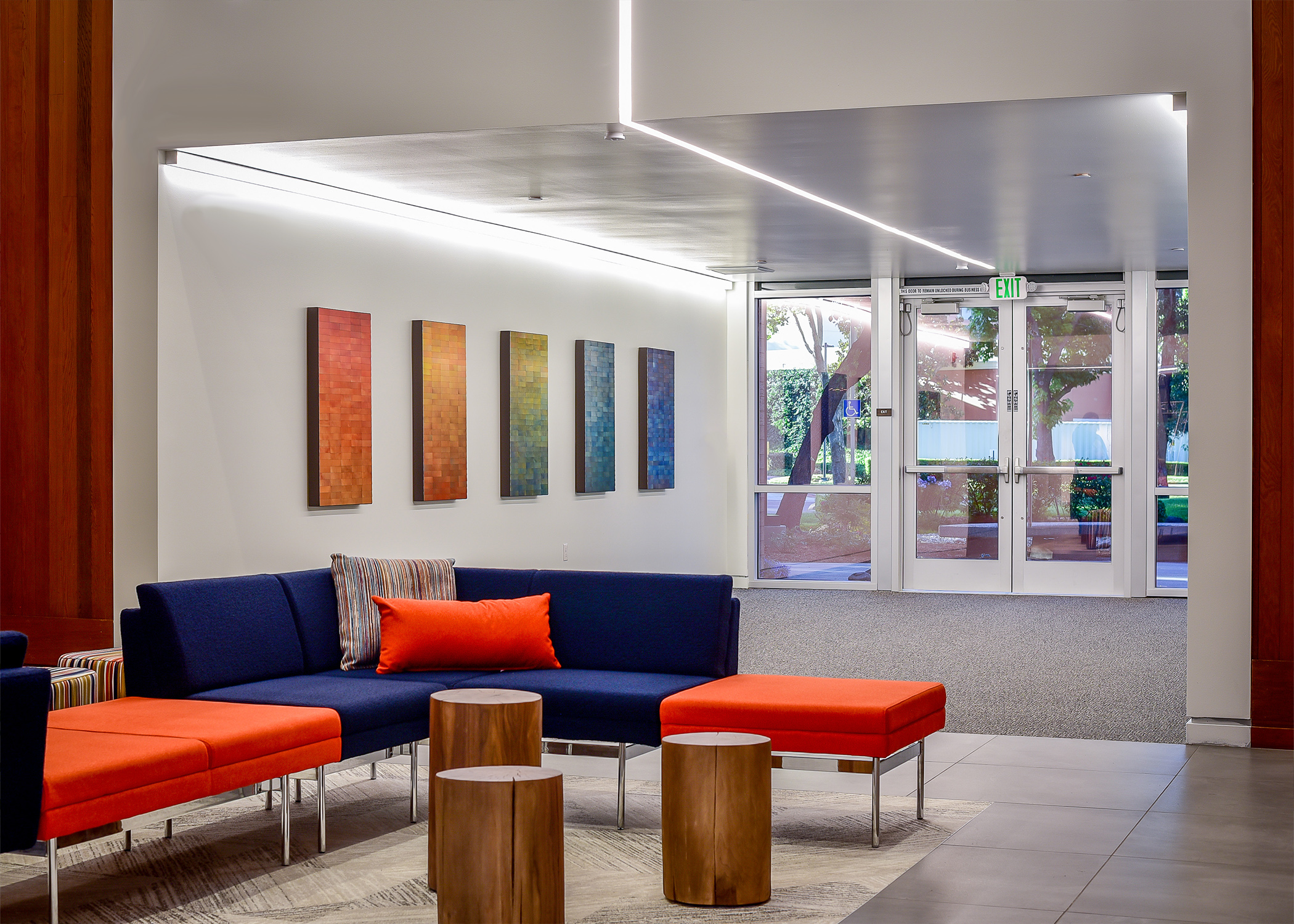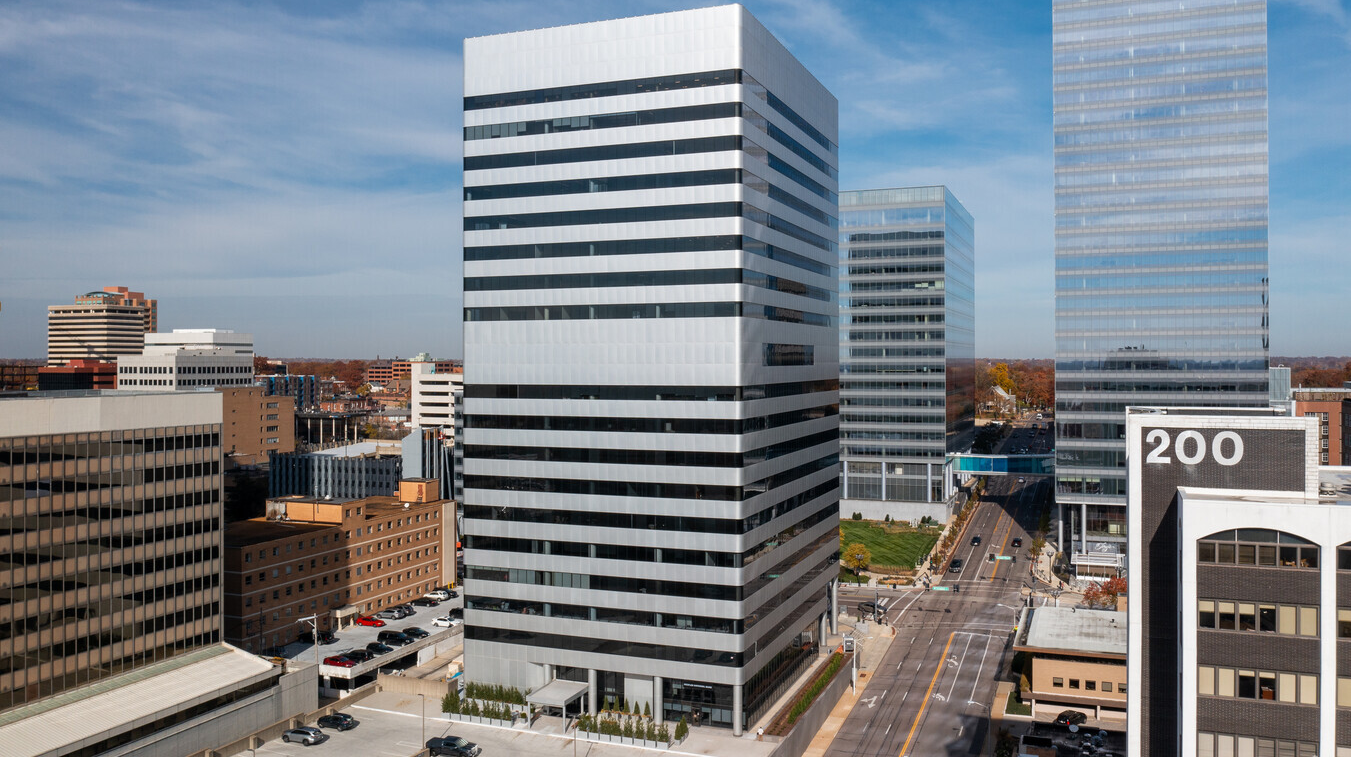Remote and hybrid work environments have upended how we do business, where we work, and how we live our lives. But there’s no single approach to remote work that satisfies the needs of every organization, banking professional, and consumer. Your ideal approach to remote and hybrid work should extend to your design strategy, adapting traditional workspaces to serve your unique employee and consumer market.
The traditional office-based model is giving way to more flexible arrangements, where employees have the option to work remotely, either part-time or full-time. This shift presents both challenges and opportunities for financial institutions as they navigate the complexities of remote work. While hybrid work models offer increased flexibility and potential cost savings, they also bring about concerns related to team collaboration, client service, and maintaining a strong corporate culture.
What is the right approach to remote work for financial institutions? And, more importantly, how could your organization benefit from an informed strategic approach to workplace design?

Financial Institutions are Trending Toward Hybrid Workspaces
The financial services industry has experienced a significant shift towards hybrid work environments, driven by advancements in technology and changes in employee preferences. With the rise of remote work options, many financial institutions have embraced hybrid models that offer employees the flexibility to work remotely while still maintaining capacity and demand for in-person collaboration. This shift reflects a broader trend towards flexible work arrangements across industries, with employees seeking greater autonomy.
In response to this demand, financial institutions are re-evaluating their traditional office-based models and exploring new approaches to accommodate remote work. However, transitioning to a hybrid work environment requires careful consideration of key factors, including the actual needs of your clients, employees, and physical space.
Financial institutions must strike a balance between offering a reasonable level of freedom for employees and ensuring that essential functions, such as client service and team collaboration, are not compromised. This requires thoughtful planning and investment in technologies and processes that support remote work, as well as a focus on creating physical spaces that are conducive to both in-person and virtual collaboration. By taking a strategic approach to hybrid work environments, financial institutions can leverage the benefits of remote work while addressing the challenges associated with maintaining productivity and employee engagement in a distributed work environment.
What do Leaders in Banking Think about Remote and Hybrid Work?
NewGround collaborated with Goldman Research Firm to conduct comprehensive focus group interviews with CEOs and executives from various sectors within the financial industry. Our joint efforts have resulted in a detailed report that provides valuable insights into the evolving landscape of remote, hybrid, and in-office work arrangements, as well as their impact on workspace environments.
Access our report now to gain firsthand perspectives from bank and credit union executives on the future of workspaces and how they are adapting to meet the changing needs of their organizations and employees.
Designing Remote Work Environments for Financial Institutions
At NewGround, we understand that designing remote work environments requires a tailored approach that caters to the specific needs and objectives of each of our clients within the banking and financial sector. We believe in creating spaces that facilitate seamless collaboration among remote teams, fostering creativity and innovation even in virtual settings. Our designs prioritize open communication channels and virtual collaboration tools to ensure that remote teams can work together effectively regardless of their physical location.

The Impact on Talent Recruitment
The shift to remote work has significantly impacted talent recruitment and retention within the financial services industry. As professionals increasingly seek flexibility and work-life balance, firms that fail to adapt to this trend risk losing top talent to competitors offering more flexible work arrangements.
To remain competitive in recruiting and retention, financial institutions are challenged to build strong corporate cultures and support employee well-being in hybrid work environments. This might mean offering flexible work hours, investing in employee development programs, or creating workspaces that promote work-life balance and collaboration.
Consider our work with Pacific Service Credit Union, a financial institution that recognized the importance of prioritizing employee needs in their workspace design. By adopting a people-centric approach and weaving employee well-being into every aspect of their workspace, Pacific Service Credit Union was able to maintain high levels of engagement and retain top talent, even in a hybrid work environment.

Access Modern Design Expertise
If you want to navigate the shift to hybrid work environments in the financial services industry, you need to consider the unique needs of your employees, client services, and physical workspaces. As remote work continues to shape the future of workplaces, financial institutions must adapt to remain competitive in attracting and retaining talent. However, every financial institution deserves a customized approach.
At NewGround, we help financial institutions successfully navigate these challenges and provide tailored solutions that prioritize collaboration, creativity, and employee well-being. If your financial institution is interested in creating a successful hybrid work environment that meets the needs of both employees and clients, we encourage you to reach out to NewGround. Together, we can design innovative solutions that drive success in the evolving landscape of remote work.
